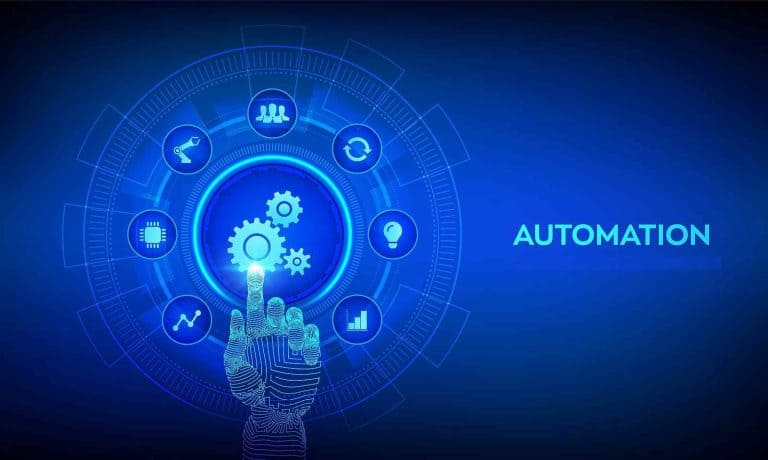Why it matters for enterprise IT
There is no shortage of artificial intelligence (AI) related news making headlines. While some is about the rise of evil robots, others envision a post-work world where artificial intelligence renders human workers obsolete. These futuristic stories are entertaining, however they can make it difficult to rationalize the current state of AI and the ways it can add real value to our everyday lives.
Table of Contents
ToggleThe reality is that, today, all AI systems rely heavily on data. Contrary to what the media would lead us to believe, AI systems don’t operate in a vacuum. How these systems are designed, constructed and maintained determines their success. “Garbage in, garbage out” applies to AI systems, particularly those supporting business users.
Forward thinking business and IT leaders are seeking practical ways to leverage analytics and artificial intelligence to allow internally and externally facing teams to personalize interactions and manage workflow and resource allocation.
According to Gartner, by 2018 50% of support agent interactions will be influenced by real-time analytics. Gartner also forecasts that the use of virtual customer assistants (VCAs) will jump by 1,000% by 2020.
All Artificial Intelligence is not created equal
Amidst the onslaught of tech industry jargon introduced over the past few years, even some of the greatest minds in the field of AI struggle to clearly define the technology. However, most experts agree that AI can be split into the categories of Artificial General Intelligence and Artificial Applied Intelligence.
Below I’ve provided brief, high level explanations of both. I don’t intend for this blog to be a scientific deep dive on artificial intelligence, but rather to provide some basic context for IT organizations considering AI for enterprise service management (ESM).
Artificial General Intelligence
The AGI Society defines artificial general intelligence as “an emerging field aiming at the building of ‘thinking machines’; that is, general-purpose systems with intelligence comparable to that of the human mind (and perhaps ultimately well beyond human general intelligence)”.
This unconfined form of AI is intended to demonstrate understanding and reasoning skills with a breadth and depth of knowledge that allows it to easily traverse between vastly unrelated topics and use cases, just as a human can. AGI remains elusive. In fact, most experts agree that we haven’t yet achieved even a six-year-old human level of intelligence, let alone full general human intelligence. Not exactly the appropriate age for entering into a career in ESM.
Even systems that take a narrow approach to AGI tend to lack the focus and deep domain expertise, as well as product capabilities and integrations required to meet even the most basic enterprise requirements.
Artificial Applied Intelligence
Artificial Applied Intelligence is commonly defined as an application of artificial intelligence to enable a high-functioning system that replicates and, perhaps, surpasses human intelligence for a dedicated purpose. With a rather vague definition, not only are rule-based chatbots and Robotic Process Automation technologies often miscategorized as being applied AI, there are also significant variations between the capabilities found across applied AI systems in general.
By incorporating machine learning (ML), natural language processing (NLP) and tight integrations with external systems of record, more advanced forms of applied AI go beyond scanning knowledge bases and automating routine tasks to intelligently correlate and expose valuable information and services to users in real time. What’s more, the unification of these capabilities enables autonomous agents to become increasingly conversational, allowing them to make recommendations and/or trigger workflows to fulfill requests for both support agents and business users.
For example, an advanced applied AI system can gather employee background information such as user name, title, location and authorized resources from across disparate data sources. With the ability to efficiently surface, analyze and aggregate this type of information, support departments can more effectively apply service delivery best practices and automate routine tasks such as resetting passwords, enabling system access, answering benefits and/or payroll questions as well as escalating users to the appropriate support channels.
Additionally, autonomous agents using ML can be trained using internal and external data to not only answer questions, but also self-learn and improve responses to users’ inquiries.
Key takeaways
All it takes is a simple Google search of “AI Fails” to see that we still have a long way to go before AGI is ready for the enterprise.
Today, applied AI is delivering significant business value. That said, an applied AI system that’s narrowly designed can be too restrictive. A broad design can cause the system to be less accurate, lack sufficient domain knowledge and/or require a significant amount of customizations and integration effort. All of which drives up the system’s total cost of ownership and time to value.
In terms of ESM, data preparation is part art, part science. It is essential that domain experts are involved early in the data and workflow modeling process to ensure the AI system achieves business objectives.
A successful AI for ESM initiative must, first and foremost, focus on delivering insights and actions that increase service quality and operational productivity for all employees.





